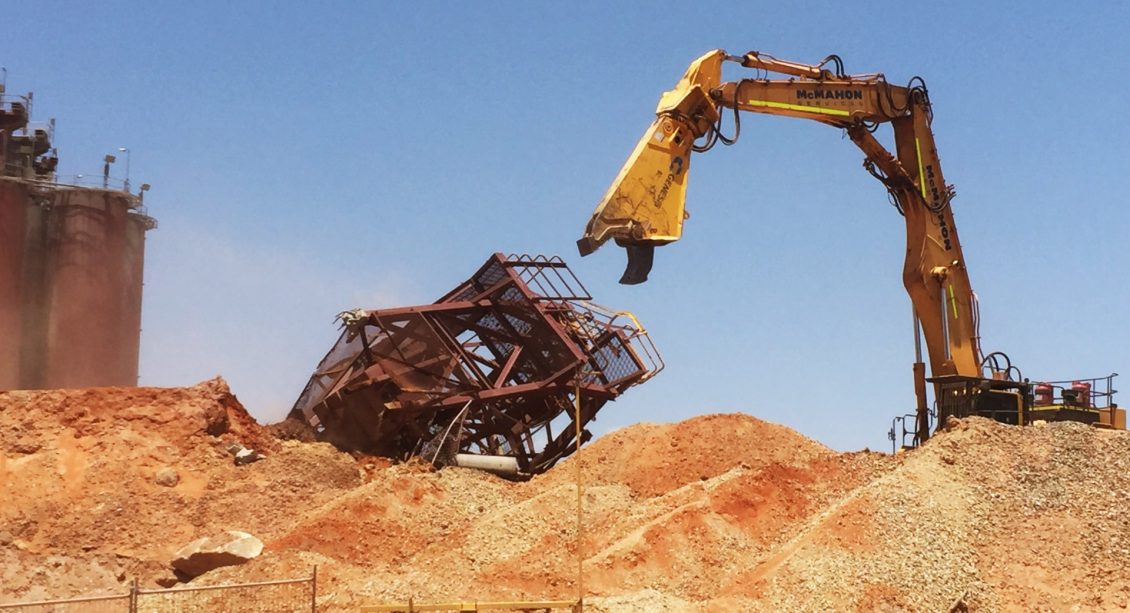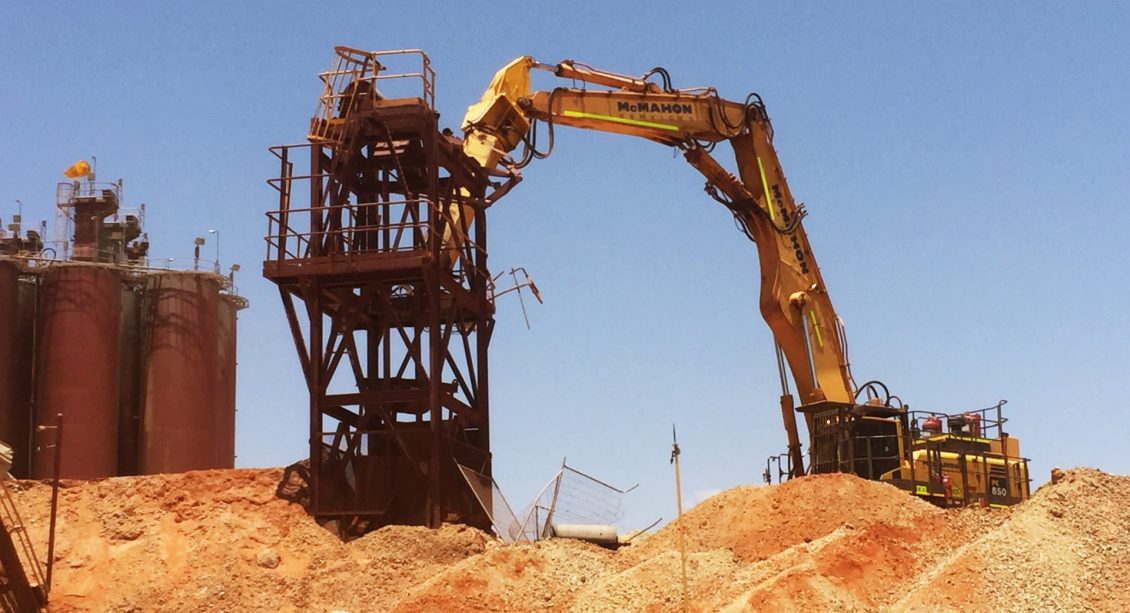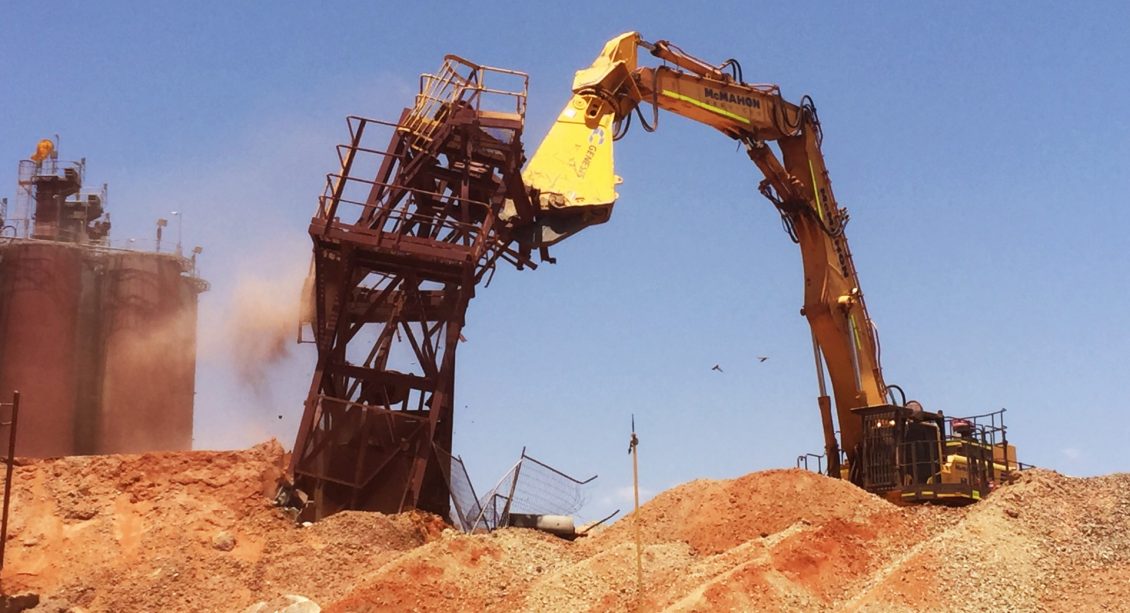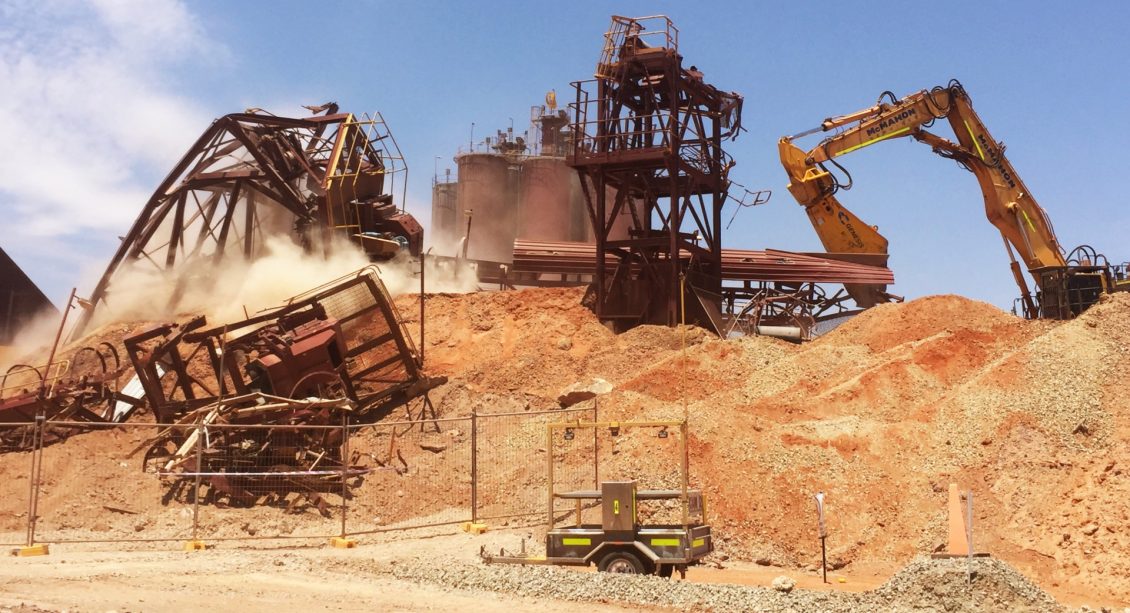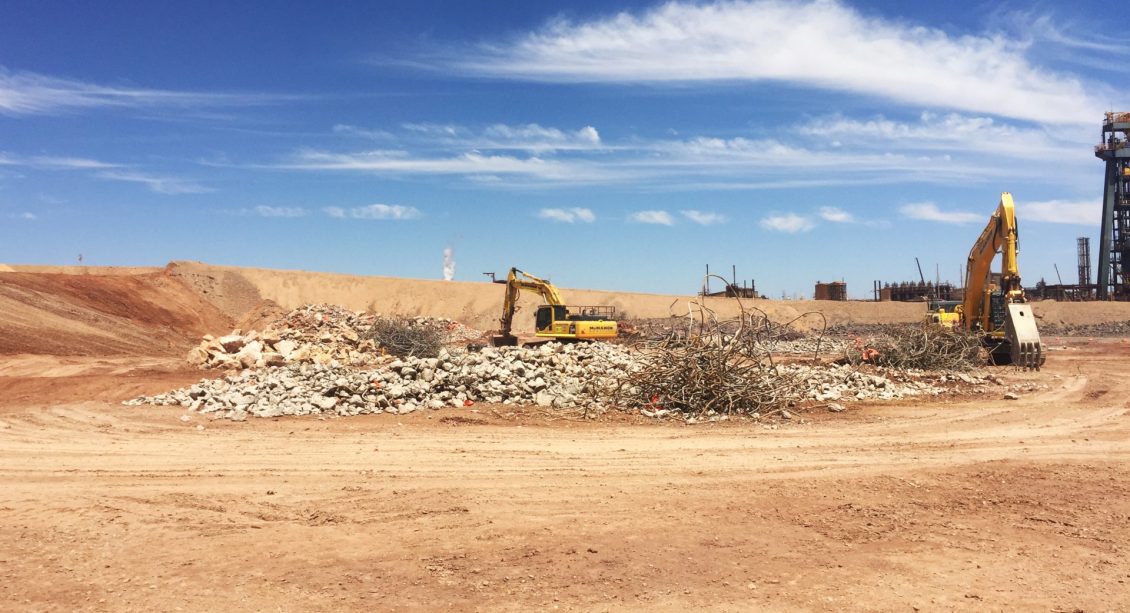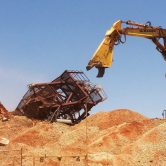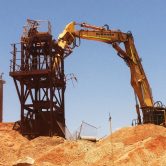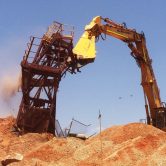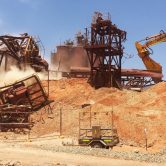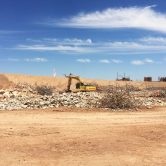Project Overview
Olympic Dam Mine located 560km north of Adelaide, is one of the world’s largest deposits of copper, gold and uranium and also has a significant deposit of silver. BHP’s Olympic Dam mine operates as a fully integrated processing facility transforming ore to metal.
The Olympic Dam mine operation includes a Cement Aggregate Fill (CAF) plant which combines sands, aggregate, cement and other products to create CAF used to backfill mined stopes underground. Aggregate is crushed and stockpiled along with sand in the area surrounding the CAF to be used at a later point in time.
Part of this original plant used to crush rock and manage the stockpiles of sands and aggregate became redundant and required removal allowing BHP to better utilise the area for stockpile storage as well as make the area available for installation of new plant and equipment and other mine operations.
McMahon Services were selected by BHP, through a competitive tender process to undertake the demolition works.
Scope of Work
Demolition of all plant, equipment, steel, footings and other items which were associated with the Razorback Crushing Plant were removed, returning the area to bare compacted earth. This plant was located in the northern section of the existing CAF plant at the Olympic Dam mine site.
In-situ tertiary crushers were required to be removed from structures. Sections of plant and equipment which were to be removed from site include feeder tunnels, conveyor belts, all slabs and footings to depth, structural steelwork, substation shed and tyres. Remediation earthworks were required onsite to ensure it was returned to the correct reduced levels and compaction to the correct BHP Olympic Dam specifications. Works also included draining fluids from all equipment including gearboxes, air conditioner and their transport to BHP’s onsite Resource Recovery Centre.
The redundant structures were mechanically demolished using demolition excavators to mitigate the risk of personnel being close to structures during majority of the demolition, which also meant utilising minimal manual labour to air gap the structures to be demolished to the structures that were to remain. The scrap steelwork and concrete were processed to minimise transport loads with maximum weight.
Over 200t of steel was scrapped and reclaimed, over 200L of oil and other fluids were drained from the infrastructure and 6,600m3 of earthworks were undertaken to remediate the site back to its original state. 13t of conveyor belts and 1460t of concrete rubble were also remediated on site.
Workforce peaked at 17 completing 10,000 work hours. Plant and equipment utilised on the project included a Komatsu PC850 demolition excavator with shear, Komatsu PC450 demolition excavator with shear, Komatsu PC300 excavator with various attachments, Komatsu WA200 loader, water truck, oxy/LPG cutting tools and equipment and a 40t Dump truck for carting materials to the Resource Recovery Centre.

